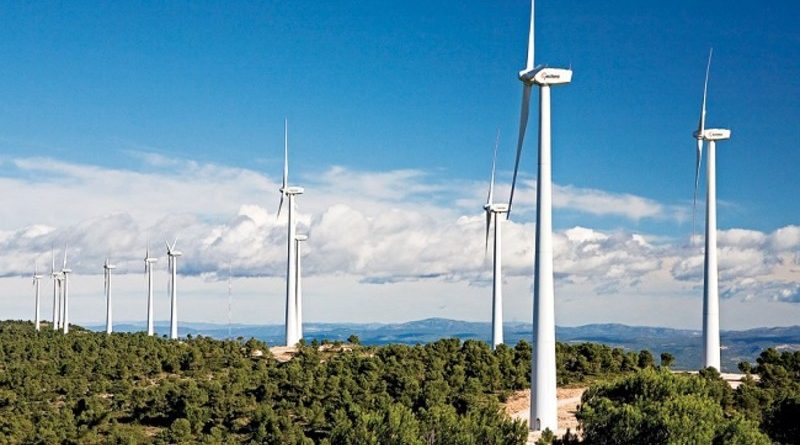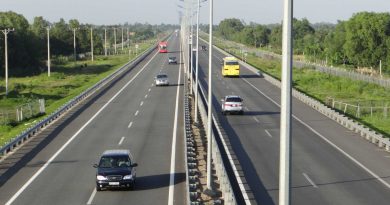Wind power project low policy
For a visionary business, the attractiveness of renewable energy projects (wind power, solar power …) is undeniable – with many incentives and stable yields. But, there is still concern, even with hundreds of projects that have just fallen into planning.
Sprint through the planning loop
On June 25, the Government issued a document approving the proposal to add 91 wind power projects to the adjusted Power Master Plan VII. This decision was made at the request of the previous Ministry of Industry and Trade as well as the goal of ensuring power supply in the period of 2021-2023 in the condition that many large power sources are being deployed slowly. Accordingly, the Ministry of Industry and Trade will be responsible for the wind power projects and the grid connected to the national power system in the above list.
Of the 91 wind power projects that have just been added to the revised power plan VII , most of them are concentrated in the Southwestern region with 37 projects with a total capacity of 3,116 MW; Tay Nguyen with 28 projects with a total capacity of 2,452 MW; North Central Coast with 16 projects with a capacity of 941 MW; The South Central region has 9 projects with a total capacity of 336 MW and one 102 MW project in the Southeast.
The list of these projects shows that most of the cases are “lined up” (preparing investment procedures, applying for permits, research policies, pre-feasibility reports …) for 1-2 years. Among them, there are some cases of owning (controlling decisions) many projects at the same time – with the starting point of being a business operating in the real estate segment.
Some typical examples are the ecosystem of businesses such as Hung Bac Energy Investment Joint Stock Company, Thang Long Commercial Investment and Real Estate JSC, Tai Tam Company Limited.
According to statistics from the Ministry of Industry and Trade, from 2011 to 2018, after the Decision 37/2011 / QD-TTg dated June 29, 2011 was issued, only three wind power projects were built and put into operation. Power generation operation with a total installed capacity of 153.2 MW because the buying price of wind power is not really attractive to investors.
In order to promote wind power development, on September 10, 2018, the Prime Minister issued Decision 39 amending and supplementing a number of articles of Decision 37. Accordingly, electricity prices are adjusted to increase. Specifically, for inland wind power, the buying price of electricity at the power delivery point is 1,927 VND / kWh (excluding VAT); For wind power at sea, the electricity buying price at the power delivery point is 2,223 VND / kWh (excluding VAT).
The above electricity price is applied to wind power projects with a part or the whole plant having commercial operation date before November 1, 2021 and applied for 20 years from the date of commercial operation. After the Decision 39, many projects have been actively proposing to supplement planning and expedite documents procedures.
Even, according to research, a series of projects have been molded, queued for approval to be added to the plan – in which, most of the additional planning documents are submitted for appraisal (by the investor and) all show their determination to put into operation before November 1, 2021 – of course, to enjoy the incentives from Decision 39.
However, the distance from being in planning to enjoying the electricity price mechanism to keep up with “dealine” (according to the statute of Decision 39), was not even.
And anxiously awaiting the price mechanism
The situation is so troublesome that the Ministry of Industry and Trade has issued a written proposal to extend the application of the price mechanism for wind power in Decision 39 for projects operating before November 2021. Accordingly, for wind power projects, the buying price is applied at 1,927 VND / kWh, equivalent to 8.5 cents / kWh. For wind power projects at sea, the purchase price is 2,223 VND, equivalent to 9.8 cents / kWh.
By the end of March 2020, there are 78 wind power projects with a total capacity of 4,800 MW added to the electricity development plan, but only 11 projects with a total capacity of 377 MW have been operated to generate electricity.
In addition, there are about 31 projects that have power purchase agreements with EVN with a total capacity of 1,662 MW which are expected to come into operation in 2020-2021. Meanwhile, there are about 250 projects waiting for additional planning with a capacity of about 45,000 MW (including 3 large-scale offshore wind power projects with a total capacity of 4,900 MW).
According to the Ministry of Industry and Trade, a number of difficulties appear to affect the implementation progress of wind power projects. A typical example is the application of the Planning Law: After November 1, 2018 (Decision 39 takes effect), investment registration activities and additional planning for new wind power projects and other The transmission project for related capacity clearance was delayed for more than a year due to the lack of guidelines for implementing the Planning Law. Currently, only 4,800 MW of wind power has been added to the planning and about 45,000 MW proposed by the provinces have not been appraised and additionally planned.
To solve problems in the implementation of the Law on Planning, the National Assembly Standing Committee issued Resolution 751/2019 / UBTVQH14 on September 16, 2014 and the Government issued Resolution 110 / NQ-CP dated February 2. 12/2019. These two resolutions have solved problems in adjusting and supplementing the planning in the transition period until Electricity Planning VIII is approved. The Ministry of Industry and Trade is continuing to submit for appraisal to submit to the Prime Minister additional electricity planning for renewable energy power projects to meet the requirements.
The next difficulty is the influence of the Covid – 19 epidemic. The epidemic affects the progress of turbine supply, prolongs construction and installation time and slows down the commissioning progress of wind power projects. Production and supply of main equipment, spare parts and accessories of wind power projects is in shortage and stagnation; Import and export activities of goods, entry and exit of technical workers and foreign experts are interrupted … negative impact on enterprises.
The wind power projects in the development planning in the southwestern region are mostly sea and nearshore projects with a total capacity of about 1,600 MW. However, wind power projects at sea use different technologies and technical solutions than turbines installed on shore, so project preparation and construction time are required longer ( on shore for 2 years, near shore for 3 – 3.5 years).
In addition, regulations on defining marine areas and issuing permits to use marine areas are quite complicated; Currently, there are no regulations on determining the area of the sea to calculate the use of the sea area … leading to prolonged time and increased costs for projects at sea.
Especially, the development of offshore (offshore) wind power. According to a World Bank report in September 2019, Vietnam has a good potential for offshore wind power, with a total technical potential of about 475 GW. The Ministry of Industry and Trade said that it had received documents from 3 provinces (Binh Thuan, Ba Ria – Vung Tau, Ben Tre) proposing to supplement the planning of 3 offshore wind power projects, with a total capacity of 4,900 MW.
Many localities have allowed investors to conduct surveys and research on offshore wind power projects with a total registered capacity of about 18,000 MW. However, the ministry said that at present, in addition to the fixed electricity price mechanism (specified in Decision 39), there is a lack of policies and mechanisms for offshore wind power development.
The Ministry of Industry and Trade determined that from now until the end of October 2021 (when Decision 39 stipulates that wind power projects in operation and power generation will apply a stable power purchase price mechanism) only about 18 months, Insufficient time for investors to prepare and implement wind power project construction (additional planning, site clearance, project formulation and approval, technical design, ordering / procurement of wind power projects equipment, environmental impact assessment, connection agreement, power purchase agreement and other agreements), especially for wind power projects at sea, projects that have not been approved for additional planning.
Notably, in the proposal sent to the Prime Minister – in order to remove difficulties for investment in wind power development, contributing to ensuring power supply in the period to 2025, the Ministry of Industry and Trade proposed the is considered a “salvage” for projects that are slipping from the effective framework of Decision 39.
These are: Consider extending the time of applying the fixed electricity price mechanism for wind power projects in Decision 39 until the end of December 31, 2023; The Ministry of Industry and Trade was assigned to calculate and propose the new wind power purchase price applicable to projects with operating date in the period November 1, 2021 – December 31, 2023 and report to the Prime Minister for consideration and approval; After 2023, wind power projects will apply bidding mechanism, competitive auction.
In this issue, it is noted that there is uniformity from 9 localities (the southwestern region, the central highlands) with potential for wind power development – when the Ministry of Industry and Trade said that it had received the reports of the People’s Committees of 9 provinces. The set reports to the Government for consideration of extending the application term of the fixed wind power price mechanism in Decision 39 for commercial operation projects until 2022-2023.
Source: TheLeader







